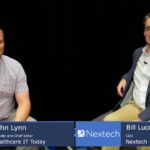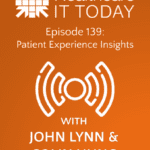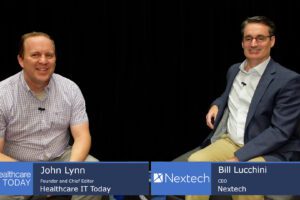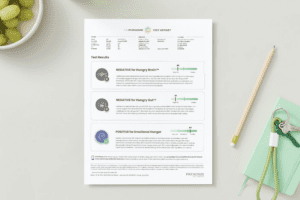 The following is a guest article by Huong Le Dieu, Lead Product Manager, BLabs at Baracoda
The following is a guest article by Huong Le Dieu, Lead Product Manager, BLabs at Baracoda
In the rapidly evolving world of healthcare, where demographic shifts and the prevalence of chronic diseases have placed immense demands on our medical systems, a transformative potential is on the rise. Connected technologies have the potential to reshape the healthcare landscape as we know it.
The Demographic Shift and Healthcare Challenges
In today’s healthcare industry, the demographic shift is undeniable, with the aging population growing at an unprecedented rate. According to the World Health Organization (WHO), the global population aged 60 and over will double by 2050. This shift presents a complex dilemma for both caregivers and medical professionals. They are navigating an increasing workload while striving to provide quality care that meets the unique needs of an increasingly senior patient demographic.
Amidst these challenges lies a visionary solution: a shift from curative to preventive care. This transformation emphasizes the cultivation of long-term health habits among individuals, reducing the burden on hospitals and redefining healthcare as a proactive endeavor.
In the realm of healthcare transformation, this shift towards prevention is complemented by the integration of connected technologies, taking center stage in empowering patients and enhancing care delivery, ushering in a new era of patient-centric healthcare.
Integration of Connected Technologies in Physician Care
The transformation of healthcare is marked by a profound improvement in communication between patients and doctors through real-time data collection and monitoring. Facilitating this evolution? A range of connected devices, including wearable fitness trackers like Fitbit, Apple Watch, and Philips Health Watch, are designed for tracking vital health metrics like heart rate, physical activity, and sleep patterns. These devices provide doctors with current patient data, enabling them to make more informed decisions and monitor their patients more efficiently, moving beyond relying solely on the patient’s self-reporting or memory.
In addition to wearable technologies, mobile health apps like MyFitnessPal have seamlessly integrated into the healthcare ecosystem, providing continuous vital health information for both patients and healthcare providers to engage in health management.
Furthermore, the use of monitoring devices, such as mobile app Glucobyte for monitoring and analyzing glucose and Fourth Frontier a chest-worn Smart Heart Monitor that provides in-depth real-time feedback on your heart health, allows doctors to effortlessly track vital health metrics like blood pressure, blood sugar levels, and heart rate in real-time. This expanded range of monitoring capabilities equips physicians to assess their patients’ conditions more comprehensively and make necessary adjustments to treatment plans as needed. In doing so, these advancements foster an even more personalized approach to healthcare.
Physicians are also benefiting significantly from advanced technology in healthcare.
Telemedicine platforms such as Teladoc and Doxy.me have played a pivotal role in expanding physicians’ ability to monitor and engage with patients remotely. Through video consultations and remote monitoring, physicians can monitor patients with chronic conditions, track their progress, and make timely interventions. Moreover, AI and data analytics tools like IBM Watson Health and Google Health diagnostic and analytical capabilities provide physicians with insights drawn from large datasets, assisting in early diagnosis, treatment planning, and personalized care. These technological advancements both improve patient outcomes and enhance the efficiency and effectiveness of physician care.
Caregivers Empowering Patients through Connected Technologies
However, the benefits extend beyond physicians alone. Caregivers, who play a crucial role in the healthcare journey, also benefit from connected technologies like Garmin, where caregivers can access patients’ vitals, track them, and send alerts through the app. Wearable health trackers provide caregivers with real-time data on their patient’s vital signs, activity levels, and sleep patterns but also promote improved patient independence. Through remote monitoring and support facilitated by telemedicine platforms, caregivers can optimize their caregiving responsibilities while ensuring that patients receive the attention they need, even from a distance.
In cases where patients have chronic conditions or require constant supervision, connected technologies like Lifeline and Medical Guardian alleviate caregivers’ physical and emotional burden, granting them more time for quality interactions and enhancing the overall care experience. Smart home monitoring systems like Ring and Google Nest make a safer home environment, allowing caregivers to remotely check if the patient is moving around the house and ensuring their well-being.
Furthermore, video monitoring and communication devices enable caregivers to maintain visual contact with their patients, which is especially valuable for those who require constant supervision. These technologies collectively empower caregivers with efficient time management, enhanced workload management, and the ability to provide high-quality care, all while fostering patient independence and well-being.
Challenges and Future Prospects
In the ever-changing world of healthcare, where challenges and opportunities coexist, the integration of technology raises crucial considerations, particularly in the realm of data and privacy. One challenge lies in the reluctance of many to embrace new technologies, driven by concerns about potential disruptions to established routines. Overcoming this resistance necessitates not only education, training, and a shared vision of technology’s positive impact on patient care but also a vigilant commitment to safeguarding data and privacy.
As we harness the power of technology to improve healthcare, it becomes paramount to ensure that these advancements are accessible to everyone, irrespective of age, income, or location. Bridging these accessibility gaps is not just a healthcare necessity but a moral duty.
The utilization of real-time data, coupled with enhanced communication channels, presents new possibilities for improved patient care. This capability enables tailored treatments and interventions, fostering more accurate diagnoses and better health outcomes. However, in our pursuit of a future that emphasizes holistic well-being and early intervention, we must be mindful of the associated data and privacy implications.
The collection and analysis of health-related data, while providing invaluable insights for personalized care, raise concerns about the confidentiality and security of this sensitive information. As we strive for more accurate diagnoses through the analysis of vast amounts of data, it is imperative to establish stringent safeguards to protect patient privacy. Striking the right balance between harnessing the potential of data-driven healthcare and maintaining the highest standards of privacy is a paramount challenge.
To realize the promises of technology fully, caregivers, physicians, and policymakers must not only embrace its potential but also address the imperative of protecting patient data. Establishing robust frameworks for data security, including encryption, access controls, and transparent data governance, is vital to building trust in technological innovations. Ethical considerations, legal frameworks, and industry standards must be continually refined to keep pace with technological advancements, ensuring that the future of healthcare is undeniably linked to the responsible and secure integration of these technological advancements, with a simultaneous commitment to ensuring data integrity and privacy.













